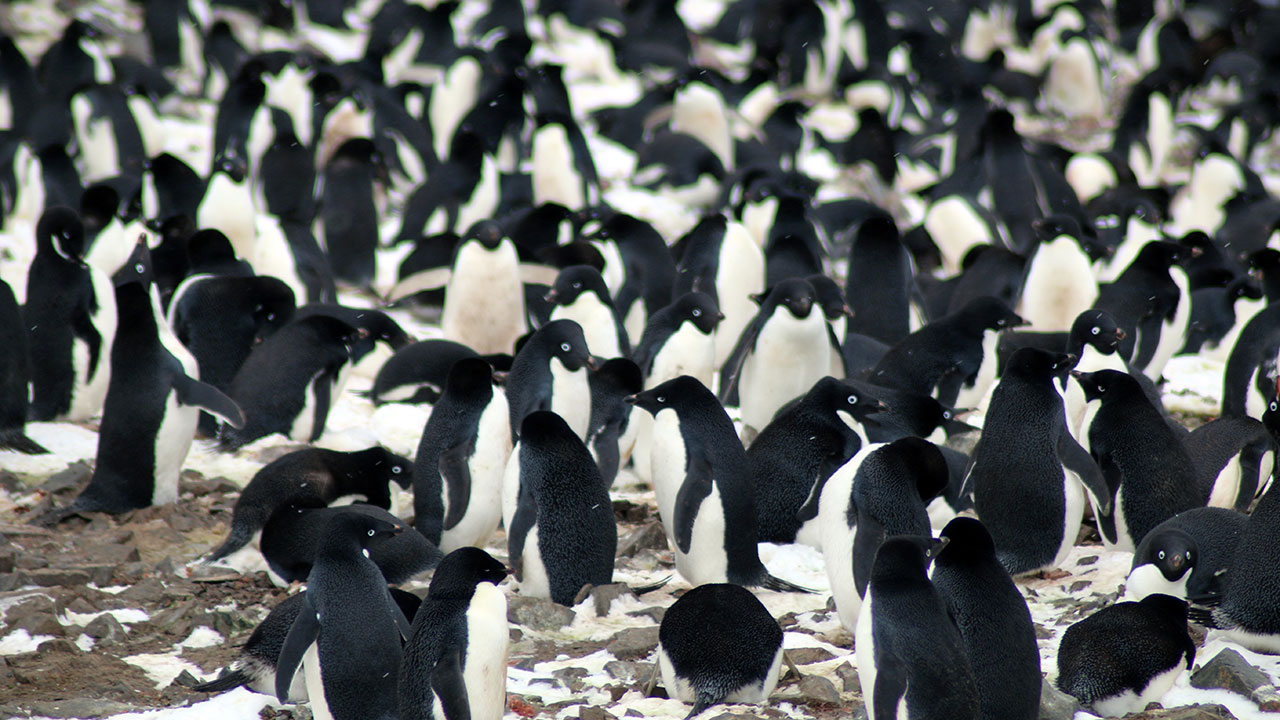Scientists just discovered a secret penguin kingdom in Antarctica using drones and satellite images
A never-before-seen "supercolony" of over 1,500,000 Adélie penguins were found in the Danger Islands.
A secret kingdom of thousands of Adélie penguins has just been discovered in Antarctica. The never-before-seen "supercolony" of penguins is believed to be home to over 1,500,000 Adélie penguins. Until now these penguins, the most commonly found in Antarctica, were believed to be experiencing a slow yet steady population decline. However, the discovery is providing new insights into the penguin species.
The penguin supercolony was discovered on the Danger Islands – a chain of rocky, remote islands in Antarctica. Scientists used existing satellite images and drones to confirm the existence of the massive population.
According to Heather Lynch, Associate Professor of Ecology & Evolution at Stony Brook University, co-author of the new study, one of the reasons why these penguin supercolonies may have gone undiscovered for so long may have been due to the islands' remoteness. The Danger Islands are surrounded by treacherous waters and are nearly inaccessible in even the peak of summer, since the ocean nearby remains covered with thick sea ice.
"Until recently, the Danger Islands weren't known to be an important penguin habitat," Lynch said in a statement.
However, in 2014, while analysing Nasa's existing satellite images of the islands, Lynch and Nasa's Mathew Schwaller found tell-tale poop stains, indicating the presence of a mysteriously large number of penguins in the area.
"Not only do the Danger Islands hold the largest population of Adélie penguins on the Antarctic Peninsula, they also appear to have not suffered the population declines found along the western side of Antarctic Peninsula that are associated with recent climate change," Michael Polito, a co-author of the new study from Louisiana State University and a guest investigator at WHOI, said.
An expedition was arranged to confirm the discovery, which involved the researchers using a drone to photos of the entire island.
"The drone lets you fly in a grid over the island, taking pictures once per second. You can then stitch them together into a huge collage that shows the entire landmass in 2D and 3D," said the research's co-author Hanumant Singh, Professor of Mechanical and Industrial Engineering at Northeastern University.
Singh developed the drone's imaging and navigation system and plans to use the images from the drone, to look for penguin nests, using a neural network software. The newly discovered penguin population can not only provide more insight on the dynamics of penguin population, but also on the impact of changing temperature and sea ice on the region.
"The population of Adélies on the east side of the Antarctic Peninsula is different from what we see on the west side, for example. We want to understand why. Is it linked to the extended sea ice condition over there? Food availability? That's something we don't know," said Stephanie Jenouvrier, a seabird ecologist at WHOI.
The findings of the new research has been published in the journal Scientific Reports.


























